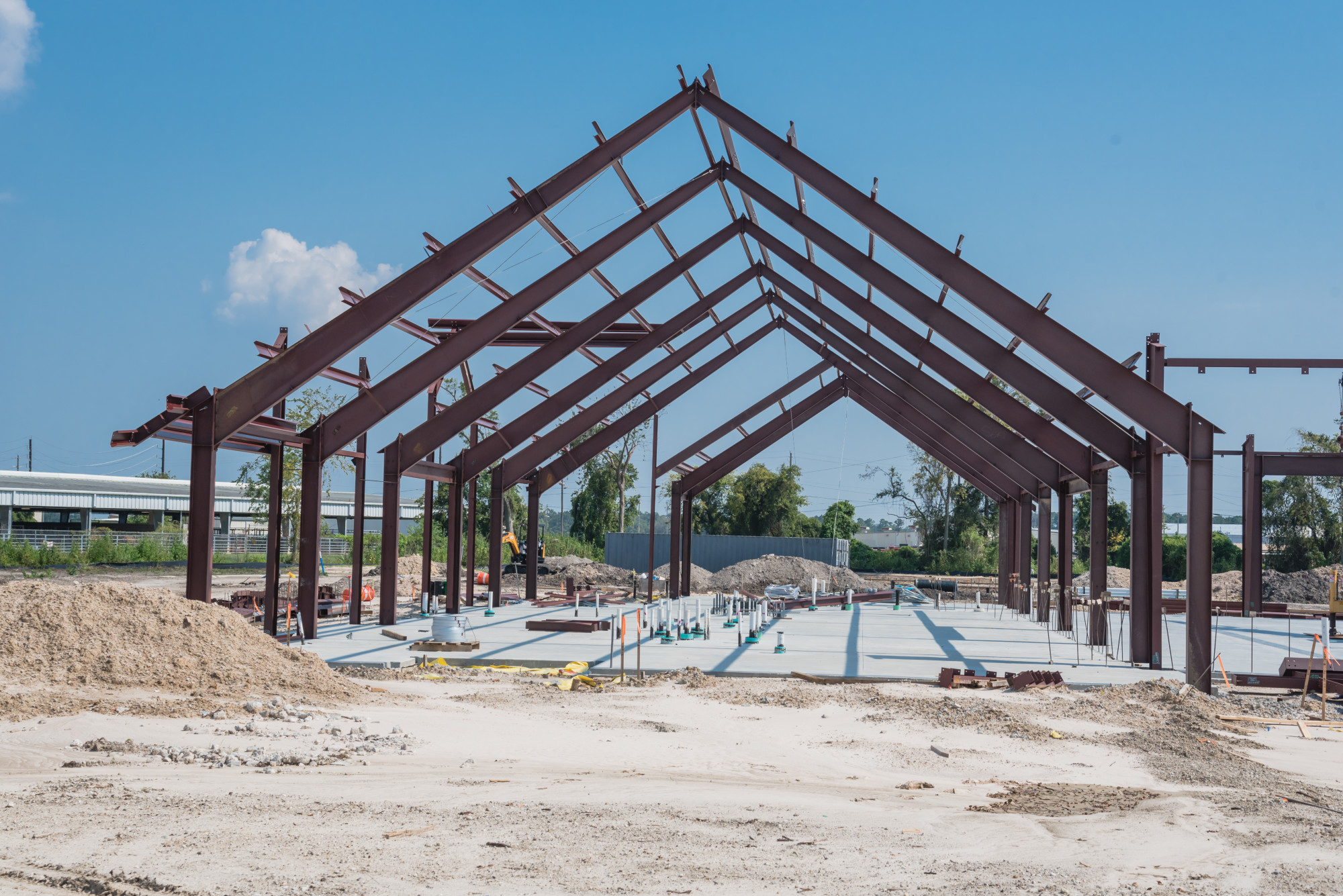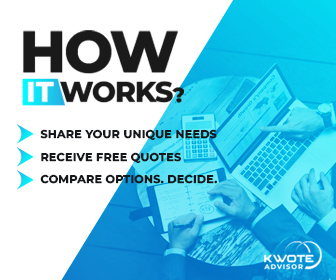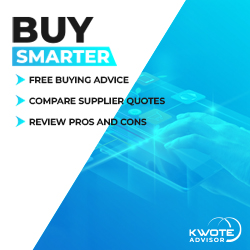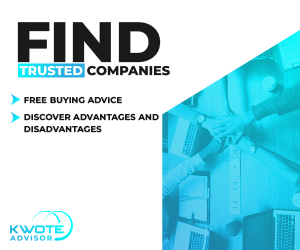
How Much Do Metal Buildings Cost?
There are several types of building materials, and metal buildings are a great way to go. In this guide from Kwote Advisor, find out the cost of metal buildings.
Calculate The Cost of Metal Buildings
Surprising, but true, metal is typically cheaper than wood. A metal building costs a little under $30 per square foot. Wooden structures will round almost $40 at their highest price per square foot.

That’s right; metal buildings are cheaper than wood. It may be surprising because the discovery of several rare Earth metals has changed everything – people are more aware of the value of materials and willing to pay for them.
In this context, metal buildings might seem like luxury items, but they aren’t. Metal buildings can carry a premium, but their cost is much lower than their wood counterparts.

So, if you’re interested in purchasing a metal building, but are afraid of the price, don’t be. We’ll discuss why you should opt for a metal building, metal building pricing, and other building materials.
We’ll also discuss how to insulate your metal building once you purchase it. There’s a lot of ground to cover, so read on if you’d like to learn more.
Why Choose Metal Buildings?
Before we get into pricing, you’re probably wondering why you’d bother with metal buildings in the first place. You know they’re cheaper than wooden buildings, but what else – why purchase metal buildings?
Metal Buildings Are Easy to Construct
One reason metal is one of the more popular building materials is that it’s easy to put up the structures. A wooden building can take weeks or months to put up, but a metal building is prefabricated.
Manufacturers construct each component of metal buildings in factories which you can have shipped to the work site. You (or the team building the structure) don’t have to waste time fabricating anything onsite.
A metal building doesn’t take longer than a few weeks, provided the construction process goes well. You’re able to move into and use your facility quickly. If you clear advantages include:
- Withstand Heavy rainfall
- Does Well With Ice and Snow
- Below Freezing Temperatures
- 110℉+ heat
- Sudden temperature changes
A Metal Building Offers Versatility
Modern technology enables us to create buildings to suit our purposes. Because metal buildings come prefabricated, making them for whatever usage you need is easy.
Metal’s highly flexible nature is another reason these types of buildings are so popular with people. You can make these buildings as big or small as needed.
Metal buildings are also low maintenance; they’re easy to maintain and long-lasting. You can easily design your metal building to look however you wish. A metal structure doesn’t have to look dull.
Metal Buildings Are Durable
We said that metal buildings are long-lasting, but you might be shocked at how long your structure can withstand the elements. A metal building can last from 50 years to a century if well-maintained.
Unlike wood, metal isn’t prone to rotting or termites. A metal building is also one of the best ways to protect your property in areas that experience extreme weather like hurricanes and tornadoes.
Metal structures are also relatively simple to repair. The precisely bolted frames and exterior shells don’t require much effort to replace or fix if damaged.
What Will a Metal Building Cost Me?
You can expect to spend $12 to $25 per square foot on a metal building. On average, a smaller metal building is $3,500.
A larger industrial complex is much more pricy at $46,200. Of course, not every metal building is $25 per square foot. Keep reading to learn more about how metal building prices work. The below table gives you a range of what a metal building will cost on average:
| 30′ x 40′ Metal Buildings | $9,700 – $21,000 |
| 30′ x 60′ Metal Buildings | $11,000 – $21,900 |
| 40′ x 60′ Metal Buildings | $15,000 – $25,900 |
| 50′ x 80′ Metal Buildings | $29,600 – $44,000 |
| 60′ x 100′ Metal Buildings | $61,060 – $76,700 |
| 100′ x 100′ Metal Buildings | $77,550 – $104,000 |
| 100′ x 200′ Metal Buildings | $144,000 – $206,000 |
Does Size Truly Determine Price?
As you’ve probably guessed, the size of your metal building impacts how much it’ll cost. Generally, the larger your building, the less you can expect to pay per square foot.
Pretend for a moment that you’re looking for a 30×40 square foot building (1,200 square feet). Pricing for that 30×40 building is $12.85 per square foot and costs between $15,000 to $17,410.

A 40×60 square foot structure is 2,400 square feet, each priced at $12.66. So, you can expect to issue approximately $25,880 to $26,460 for a 40×60 metal building.
Let’s say you’re looking for a little more space; a 60×100 square foot metal building equals 6,000 square feet and is $9.43 per square foot. You’re going to pay $54,600 to $55,000 for the installation.
If the other buildings don’t have enough space, 100×100 (10,000 square feet) might be perfect for you. You’ll pay $9.36 per square foot, so that’s $91,790 to $96,390.
The smallest metal buildings, lean-tos, are $5.44 per square foot. A lean-to is a structure that shares a wall with the main building, covered by a slanted roof leaning against the shared wall.
Think of it as a shed connected to the primary structure. A lean-to is the cheapest metal building you can buy due to how little space it requires.
Most lean-tos are eight to 16 square feet – at $5.45 per square foot, you’ll pay between $43.39 to $86.75 for a lean-to.
Does the Type of Steel Building Determine Price?
People often use metal buildings for agricultural purposes, but metal buildings can be anything from office buildings to houses. The types of buildings you want will determine how much you pay.
Incidentally, barns are the first types of metal buildings we’ll discuss. A wooden barn is about $40 per square foot. If you wanted to construct a wooden 800-square-foot barn, that’s around $32,000.
A metal barn the same size is approximately ten grand. Two thousand square feet is twice as much at 20 grand. Five thousand square feet of barn space is fifty grand or more.
Metal Horse and Livestock Stable Prices
Technically, there’s not much difference between a horse and livestock stable. If the stable can house horses, it can accommodate cows. You can purchase prefabricated stables to shelter animals and associated property.
A 60×70 (4,200 sq. ft) square foot horse stable is almost five grand; 60×80 (4,800 sq. ft) square feet costs about the same. 65×80 (5,200 square feet) and 90×60 (5,400 square feet) will cost $5,115 and $5,115 respectively.
Metal Garage Pricing
The price of your metal garage depends on a few factors: Size and style, snow load, wind rating, and material gauging (thickness). Most manufacturers use 14 GA (gauge), but you can find 12 GA metal frames.
Metal garages in the southern United States often cost less than their northern counterparts due to less snowy winters. Your garage won’t need to support much weight during the cold months in the south.
A 12 GA, 12×21 (252 sq. ft) square foot A-frame metal garage in – let’s say, South Carolina – will cost $6,500. A vertical roof with the same square footage is $6,680. Vertical roofs will generally cost more to build.
A 12×41 (492 sq. ft) square foot, 12GA, A-frame, and vertical garage in South Carolina would cost $9,000 and $9,100, respectively. Now let’s compare metal garage prices in the northern United States.
We’ll say this next person looking to purchase a metal garage lives in Vermont. A 12GA, 12×21, A-frame garage in Vermont is $9,790, and a vertical roof garage is $9,800.
A larger 12×41 A-frame roof costs $13,500 and a vertical 12×41 will run homeowners $13,800. There are various garage sizes to choose from, but these are what you can expect to pay for these specific sizes.
Metal Warehouse Pricing
Continuing on our theme of size determining price, we’ll discuss metal warehouse pricing based on how large your storage facility needs to be. Only about 37% percent of warehouses are below 25,000 square feet.
The average cost of constructing a metal warehouse is about $15 per square foot. A small storage facility around 30×40 (1,200) square feet costs in the area of 15 grand. You’ll pay about $12 per square foot.
More significant buildings – say 60,000 (200×300) square feet – can cost over 400 grand to build. The fee per square foot is $9.10. Five thousand (50×100) square foot unit costs $45,100 – or $9.10 per square foot.
Two thousand square feet (40×50 sq. ft) is 25 grand at a little over 12 dollars per square foot. There is a vast range of metal building sizes, and your price point changes according to what you want.
How Does Metal Measure Up to Other Types of Materials?
If you’ve read this far in the article, you may have gotten the implication that metal is among the most fantastic types of building materials. While metal buildings are an excellent choice, they do have their cons.

We’ve already discussed why metal buildings are worth considering, but here’s why metal buildings may not be the best choice. Firstly, metal is prone to corrosion, especially in warm, tropical places or by the sea.
Unlike wood, you’d also need specialized materials; you can’t just nail everything together. You need items like rivets, bolts, and tapping screws.
Metal is also heavy, and more significant buildings may require machinery like forklifts to construct. It also costs more to transport weightier objects. The more something weighs, the more effort it takes to move them.
Metal is also a poor insulator and more conductive to heat and cold. Metal may also sweat when the temperature changes and cause moisture accumulation in your building.
However, it’s possible to negate these issues if you can insulate your metal building properly. We’ll talk about how to insulate a metal structure later correctly.
Concrete Building Prices and Advantages
Before we discuss the advantages and disadvantages of concrete buildings, we should talk about how much they cost compared to metal structures. Concrete is difficult to price, but here are a few listings:
- Concrete prices per square foot range from $4.25 to $6.25
- You’ll pay $125 per yard for concrete
- A concrete house would cost $110 to $250 per square foot
One advantage metal has over concrete is that it’s cheaper than paying for concrete. That aside, concrete is also a strong material, and it’s energy efficient. Concrete doesn’t absorb heat or cold from its surroundings.
The inherent energy efficiency of concrete makes it easier to control the building’s temperature. Concrete is also a good sound dampener.
If you’re working with loud machinery in one room, the thick walls will protect other areas of your building. Concrete is also durable, fire resistant, and environmentally friendly like metal.
What Are Concrete’s Disadvantages?
We already said that concrete is more expensive than metal, but what other disadvantages do you risk by choosing a concrete building? One issue is that it’s challenging to reach your electrical and plumbing.
You have no other choice but to break the walls if you need to make repairs. You’re also unable to request much customizability with concrete, at least not without spending more money than paying for the initial material costs.
Pros and Cons of Wood Buildings
We’ve already established that wooden buildings are costlier than metal ones. But as a refresher, a wood building costs as much as $40 per square foot. The most you’ll pay for metal is approximately $25 per square foot.
Price aside, one advantage of wood over metal is that there are over 60,000 kinds of timber worldwide. You have many wood types to choose from for constructing your building.

Both concrete and wood are types of materials that absorb sound. Wood is excellent for absorbing echoes. Wood is also easy to repair and replace if need be.
You can stain, oil, and paint the wood if it wears away or needs retouching. Wooden building repairs are also more accessible for DIYers as well. As for the disadvantages, wood is notorious for shrinking and swelling.
When wood absorbs enough water, the material expands and contracts, which eventually weakens the material. Of course, shrinking is only an issue with untreated lumber.
Perhaps the most apparent weakness of wood is that it rots, and most types of wood burn easily. Water can result in wood rotting away, and it’s highly combustible unless treated with chemicals.
Pests like termites and wood bees can weaken the structural integrity of the wood. You’ll need regular pest treatments to keep your wooden structure in good condition.
Insulating Metal Buildings
Ok, so metal buildings are cheap and easy to build. If you’ve read this far and have decided you want a metal building, you’ll need to insulate the structure. We’ve somewhat mentioned why metal buildings need insulation.
A metal building’s interior changes rapidly with its exterior environment. You want insulation to keep the metal from sweating and accumulating moisture in your structure.
Another reason you want insulation is for sound dampening. Metal amplifies noises and makes them more abrasive to the ear; insulation will help muffle the harshness of sounds in the building.
There are many different types of materials you can use for insulation. Perhaps the most well-known sort is fiberglass. Fiberglass is popular because you get the highest R-value for a low installation price.
The “R” in R-value stands for “resistance.” Resistance, in this context, refers to how much resistance a material has to heat flow or temperature conduction. In other words, high R-values mean good insulation.
Fiberglass doesn’t take much effort to install and is environmentally friendly. But, you need PPE to place fiberglass as breathing the substance is harmful.
How to Install Fiberglass
If you’re looking to install fiberglass, remember that it needs to be the same or slightly thicker than the wall girts. Make sure you fill any gaps and excess cavities to reduce condensation.

Standard building blanket installation involves installing fiberglass between the girts (horizontal structural piece) and exterior metal paneling.
One of the best things about a standard building blanket installation is it’s easy to retrofit. Retrofitting is when you add a feature to a building after the structure is constructed.
Standard building blanket installation is also easy to install and has a high R-value of around R-7 to R-19. Standard building blanket installation does have its cons. Thermal bridging can reduce the R-value around the girts.
Thermal bridging happens when highly conductive or poorly conductive materials have gaps that allow heat to flow across thermal barriers.
How to Install a Fabric Liner System
A fabric liner system is installed between the building’s girts after you place the wall panels. You hang the insulation on insulation hangers. After the insulation is in place, you cover it and the girts with a fabric liner.
Fabric liners are great for new and retrofitted buildings. They conform to most energy codes and are easy to install. Fabric liners do make it hard to access electrical and plumbing in care of repairs, though.
How to Install Spray Foam
Spray foam is another popular type of material for insulation because it’s easy to install. All applying spray foam requires is spraying the substance directly onto the metal wall paneling.
The metal panels will need prepping before you spray the insulation. There are two types of spray foam: closed and open cell. Closed cell spray polyurethane foam (SPF) is a slow expanding plastic with a high R-value.
Open cell spray foam is less dense than closed cell spray foam and is faster and less expensive to apply. Most insulation installers use closed spray foam. Spray foam adds extra rigidity to buildings but may void the warranty.
Other Types of Insulating Materials
There are other kinds of metal building insulation besides the more popular ones. These building insulations may be unfamiliar to many of you, but they are still viable options. Read on to learn more about these insulation types.
Insulated Metal Panels
Insulated metal panels are what they sound like – metal panels come preinsulated. Insulated metal panels come with finishes on the interior and exterior and can be simple to install.
But, insulated metal panels are expensive, and you need specialized equipment to install them.
Reflective Bubble Reflective
Reflective bubble reflective is a layer of polyethylene bubble sandwiched between two metalized low emissivity surfaces, which reflect up to 96% of radiant heat.
What we mean by “emissivity” is the percentage that the surface emits. What the metalized surfaces emit, in this case, is heat. So, “low emissivity” means that the metalized surface emits very little heat.
What You Should Know Before Getting a Metal Building
You know by now that metal is worth considering all the types of buildings you could buy. Metal is one of the cheapest building materials you could use and is liable to last upward of a century.
But what else do you need to know about metal buildings before purchasing? It’s never a good idea to buy anything blindly, so here are a few more things you should know about getting a metal building.
You Need a Concrete Slab
Like any building, your metal structure needs a foundation, and concrete is perfect for the job. A concrete slab foundation is about $8 per square foot. The price can fluctuate depending on where you live.
Pouring the concrete may cost less, but you’ll still need to pay for the tools and supplies.
Can You Finance a Metal Building?
You can seek financing if you don’t think you can foot the bill for your new metal building. Some manufacturers offer funding from places like New Century Bank and Acorn Financing.
Homeowners can finance a metal garage through a second mortgage, home equity line of credit, and cash-out financing. You can also try banks, credit unions, and peer-to-peer lenders for funding.
Some Metals Work Better Than Others
The best material for metal buildings is steel because it’s more robust and durable. Aluminum is comparatively softer, so it’s not a prime choice for building construction.
Larger metal buildings employ red iron I-beams for structural integrity, and they’re coated with iron oxide. Smaller buildings use galvanized steel frames and panels.
Looking to Price Metal Buildings
Choosing metal buildings makes sense because they’re easy to construct and, more importantly, cheap. A metal building costs less than wood and concrete and has advantages those building materials don’t have.
If you’re looking for the correct metal building cost for your budget, consult Kwote Advisor. We can help you price your metal stable or warehouse quickly and easily.
If you have any questions regarding metal buildings (or other items), visit Kwote Advisor for your free quote today!
